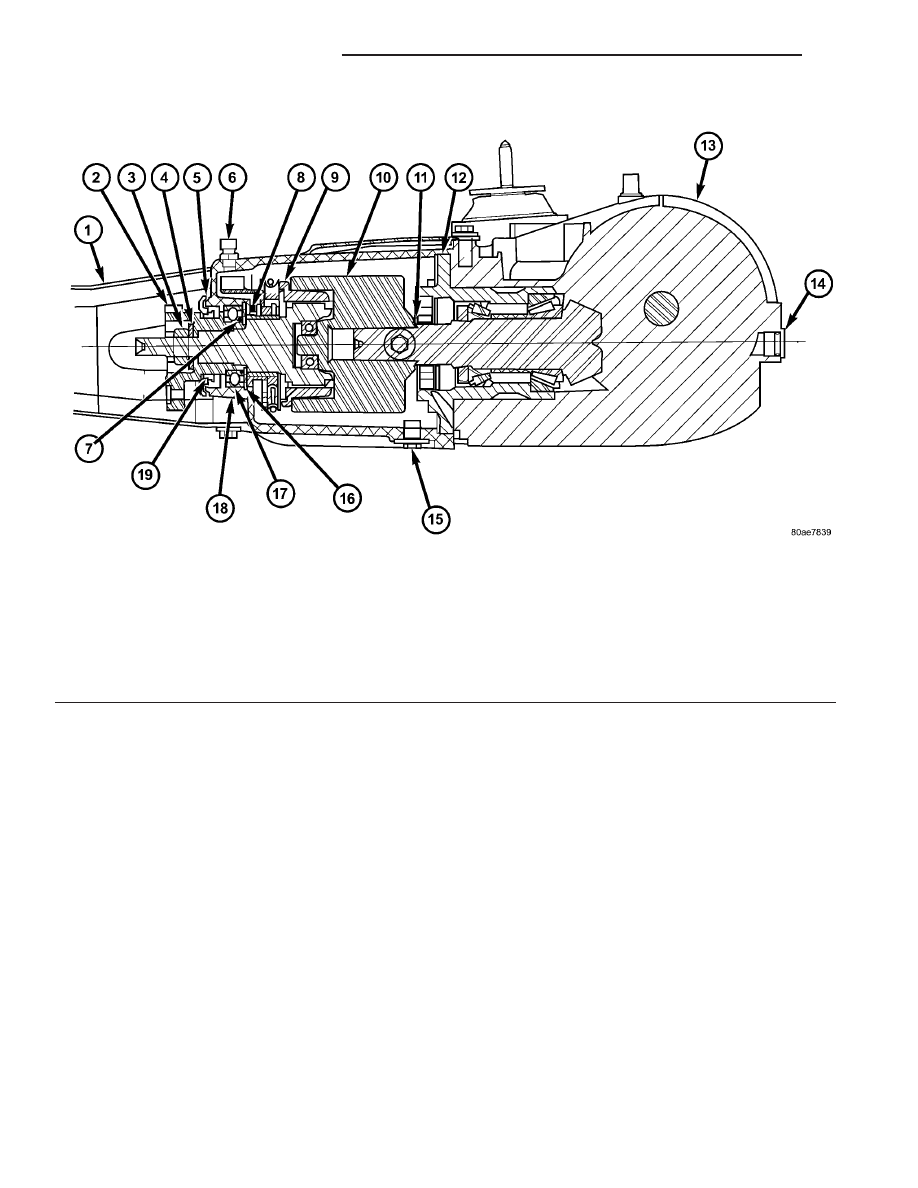Chrysler RG Voyager. Manual - part 448

front and rear drive units. The unit is totally sealed
and partially filled with silicone fluid. There is no
adjustment, maintenance or fluid checks required
during the life of the unit.
The overrunning clutch allows the rear wheels to
overrun the front wheels during a rapid front wheel
lock braking maneuver. The overrunning action pre-
vents any feed-back of front wheel braking torque to
the rear wheels. It also allows the braking system to
control the braking behavior as a two wheel drive
(2WD) vehicle.
The overrunning clutch housing has a separate oil
sump and is filled independently from the differen-
tial. The fill plug is located on the side of the over-
running clutch case. When filling the overrunning
clutch with lubricant use Mopar
t ATF+4 (Automatic
Transmission Fluid—Type 9602) or equivalent.
The differential assembly contains a conventional
open differential with hypoid ring gear and pinion
gear set. The hypoid gears are lubricated by SAE
80W-90 gear lubricant.
DIAGNOSIS AND TESTING
DIAGNOSIS AND TESTING - REAR DRIVELINE
MODULE NOISE
Different sources can be the cause of noise that the
rear driveline module assembly is suspected of mak-
ing. Refer to the following causes for noise diagnosis.
DRIVELINE MODULE ASSEMBLY NOISE
The most important part of driveline module ser-
vice is properly identifying the cause of failures and
noise complaints. The cause of most driveline module
failures is relatively easy to identify. The cause of
driveline module noise is more difficult to identify.
If vehicle noise becomes intolerable, an effort
should be made to isolate the noise. Many noises that
are reported as coming from the driveline module
may actually originate at other sources. For example:
• Tires
• Road surfaces
• Wheel bearings
Fig. 1 AWD Driveline Module Assembly
1 - TORQUE ARM
8 - WASHER
15 - PLUG-OVERRUNNING CLUTCH
HOUSING DRAIN
2 - INPUT FLANGE
9 - BI-DIRECTIONAL OVERRUNNING
CLUTCH (BOC)
16 - SNAP RING
3 - FLANGE NUT
10 - VISCOUS COUPLER
17 - BEARING
4 - WASHER
11 - SHIM (SELECT)
18 - OVERRUNING CLUTCH HOUSING
5 - SHIELD
12 - O-RING
19 - SEAL-INPUT FLANGE
6 - VENT
13 - DIFFERENTIAL ASSEMBLY
7 - O-RING
14 - PLUG-DIFFERENTIAL FILL
3a - 12
REAR DRIVELINE MODULE
RG
REAR DRIVELINE MODULE (Continued)